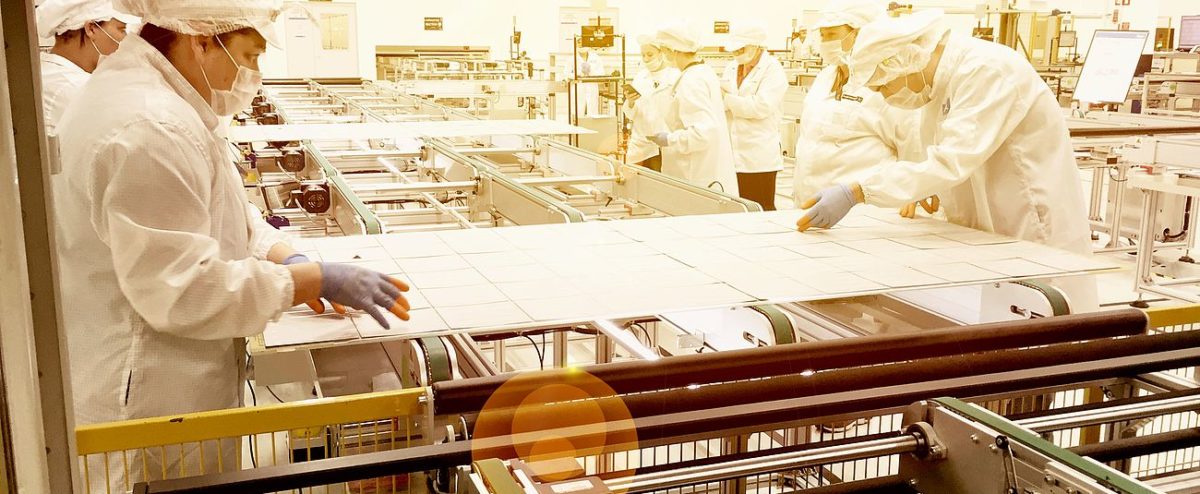Canadian Solar has revealed its fourth-quarter and full-year results, with module shipments reaching 8.6 GW for all of 2019. That was 2 GW more than in 2018, and around 200 MW more than its guidance suggested.
In the last three months of 2019, the module manufacturer shipped 2.5 GW of its modules to 60 countries – 100 MW more than in the previous reporting period, and 100-200 MW above its guidance.
“We achieved strong results in Q4 and the full year 2019,” reported Yan Zhuang, acting CEO. “On the module and systems solutions side, 2019 module shipments grew by almost 30% year-over-year, while underlying gross margin increased by 480 basis points (excluding the benefit of the AD/CVD true-up), resulting in a highly profitable Q4.”
Revenue drivers
Its top five markets ranked by revenue were the United States, Brazil, China, Japan, and Australia in the fourth quarter. Brazil, the United States, Australia, Japan, and China were its top markets for all of 2019.
Multicrystalline modules accounted for 68% of the company's module shipments in the fourth quarter and 74% for all of 2019, with monocrystalline modules representing 32% and 26%, respectively.
Fourth-quarter revenues reached $920 million, up from $760 million in the third quarter, and up from $901 million in the final three months of 2018. The company also beat its guidance by $40 million to $70 million.
Net revenue for the full year was $3.2 billion, marking a $540 million decrease year on year. The company said that higher global shipments, stable prices for solar modules, and ongoing monetization were responsible for the upward trend.
“The strategic decisions we made in R&D and production capacity helped us achieve one of the industry's highest margins, as we build upon our strong brand and maintain pricing power,” said Shawn Qu, chairman and CEO of Canadian Solar. “We continue to be an innovation leader, recently setting another world record in cell conversion efficiency of 23.81% for N-type, large-area, multicrystalline silicon solar cells. This further extends our competitive advantage, as we deliver modules with mono-like efficiencies at an attractive ASP.”
Net income attributable to Canadian Solar was $171.6 million at the end of 2019, with diluted earnings per share standing at $2.83. Twelve months earlier, those figures stood at $237.1 million and $3.88, respectively.
Additionally, the benefit of anti-dumping measures and the countervailing duty true-up was $6.4 million in the last three months of 2019, compared to $24 million in the preceding quarter.
Project pipeline
Canadian Solar's project backlog and pipeline stood at 15.4 GW as of Jan. 31, 2020. About 3.7 GW of that capacity is in the backlog stage, with 11.6 GW in the pipeline. The vast majority of those projects are in the Americas, with a slight bias toward the north.
Per its full-year financial statement, the company will also increase its manufacturing capacity throughout the year. Ingot production stands at 1,850 MW and will reach 2,350 MW by the end of the year. Cell capacity will increase from 9,600 MW to 10,100 MW in the same period, and module capacity will jump from 13,040 MW now to 16,050 MW by the end of the year.
“We are proactively taking contingency measures to preserve cash and minimize risk, should the macro situation deteriorate further,” explained Huifeng Chang, senior vice president and chief financial officer. “Likewise, our financial plan has the flexibility to quickly switch gears if the global economy recovers faster than expected. We plan to continue with our stock repurchase program to create extra value for shareholders as recent Covid-19-related panic-selling has brought our equity valuation below book value.”
Future outlook
The company noted that its outlook is subject to uncertainty due to the ongoing Covid-19 crisis. Nonetheless, Canadian Solar believes it will ship 2.15 to 2.25 GW of modules in the first three months of 2020, with 250 MW of this to be attributed to its own projects business. Total revenues are expected to come in at $780 million to $810 million, while its gross margin will likely hit 26% to 28%.
For all of 2020, the company expects total module shipments to fall within the range of 10 GW to 12 GW, with total revenue expected to range from $3.4 billion to $3.9 billion.
“We were experiencing strong demand across all regions until the past few days, as we started to see some delays and weakening demand,” concluded Acting CEO Yan Zhuang. “Our current guidance incorporates the estimated impact to the best of our knowledge today, but the situation is fluid, and we are closely monitoring and analyzing market conditions. We have a globally diversified revenue base and tight control over the supply chain, which gives us significant flexibility and room to adjust to external changes. Our long-term outlook remains optimistic, and we will continue to execute on our strategy and create value for the company and its shareholders.”
This content is protected by copyright and may not be reused. If you want to cooperate with us and would like to reuse some of our content, please contact: editors@pv-magazine.com.




1 comment
By submitting this form you agree to pv magazine using your data for the purposes of publishing your comment.
Your personal data will only be disclosed or otherwise transmitted to third parties for the purposes of spam filtering or if this is necessary for technical maintenance of the website. Any other transfer to third parties will not take place unless this is justified on the basis of applicable data protection regulations or if pv magazine is legally obliged to do so.
You may revoke this consent at any time with effect for the future, in which case your personal data will be deleted immediately. Otherwise, your data will be deleted if pv magazine has processed your request or the purpose of data storage is fulfilled.
Further information on data privacy can be found in our Data Protection Policy.